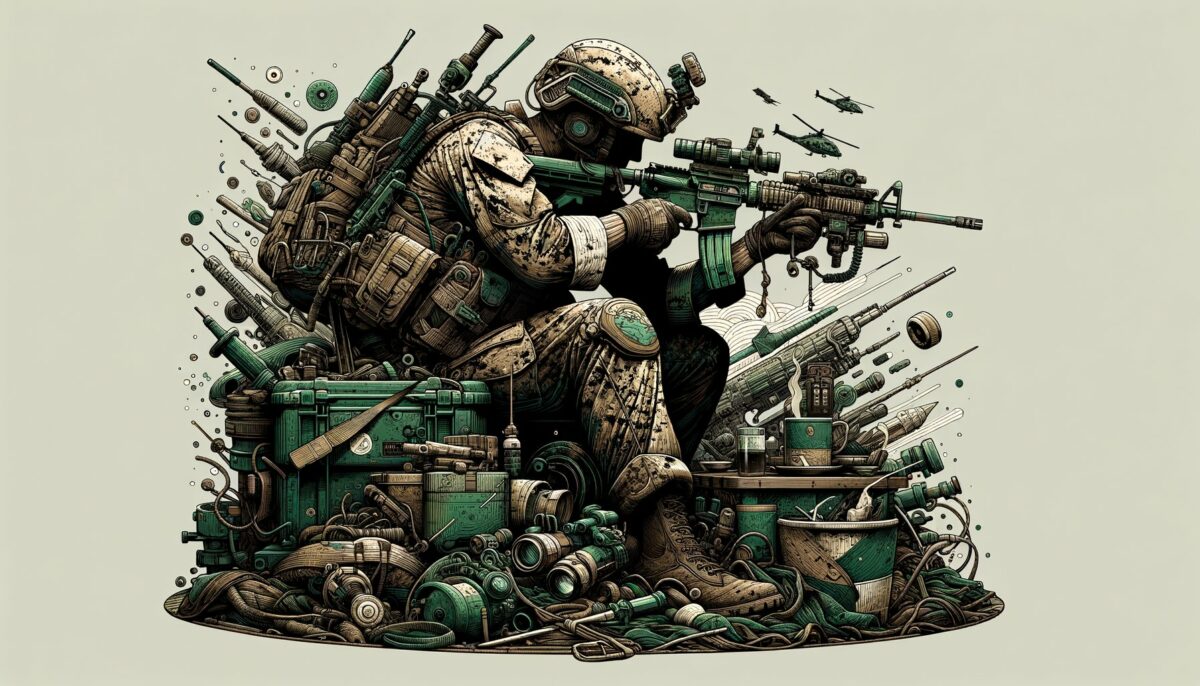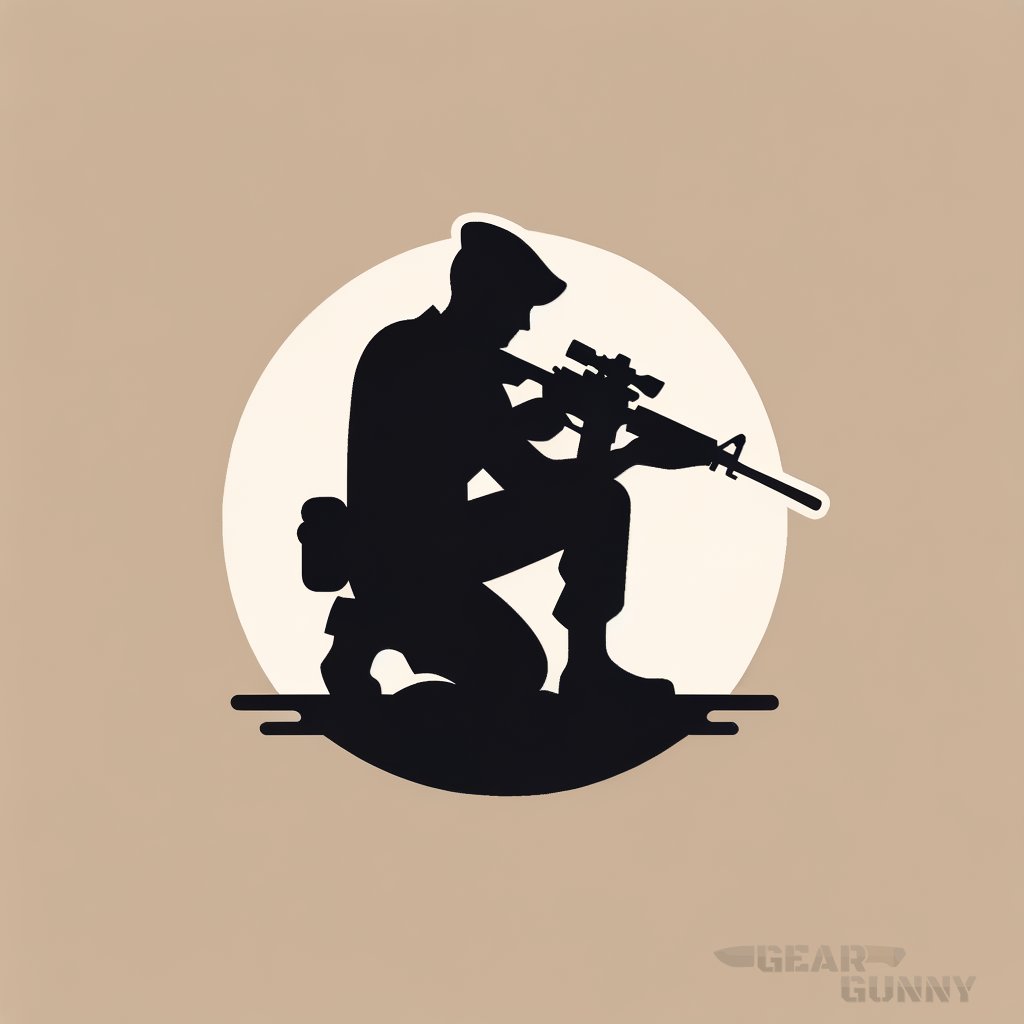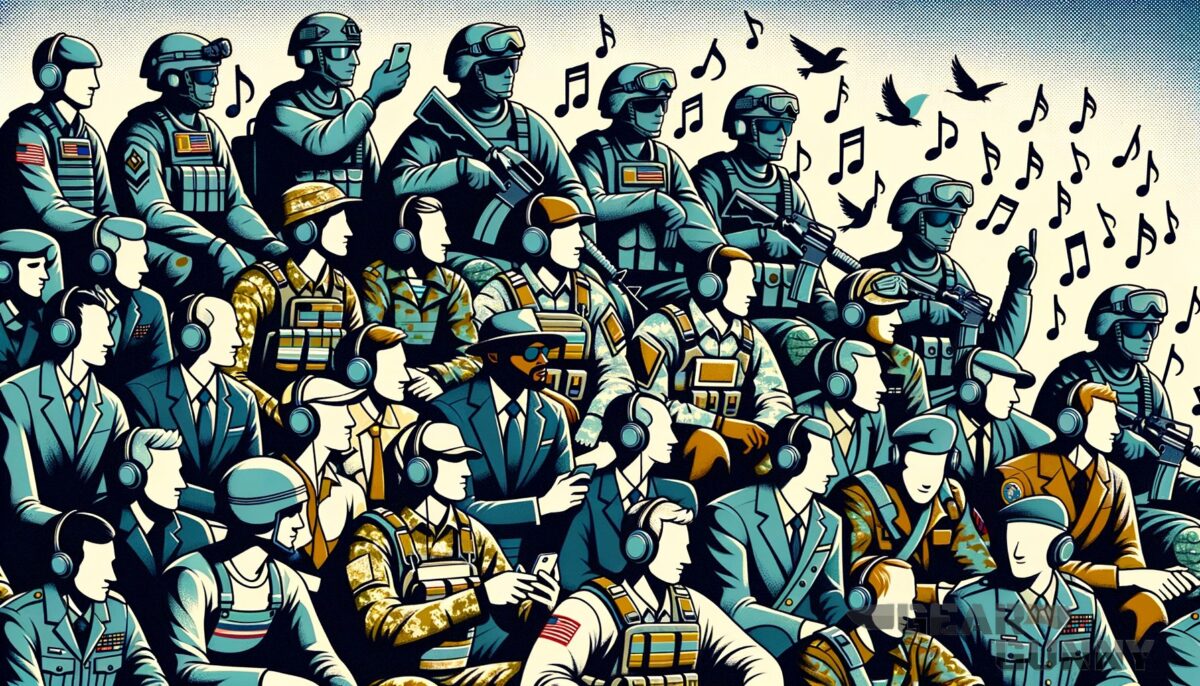Ever wondered which roles in the Marine Corps might spike your adrenaline like no other? Think about tactical scenarios where every move could be the difference between safety and peril. Ready to dive in and discover the most perilous assignments? Then prepare to explore the roles that bring the phrase “the few, the proud” to life.
We’ll talk about staying protected in these risky roles and how the best plate carriers can be a life-saver.
Key takeaways
- Pararescue jumpers hold the title for the most dangerous role in the Marine Corps.
- Specialized training is crucial for surviving and thriving in these high-risk positions.
- Quality tactical gear can mean the difference between life and death on the field.
What is the most dangerous job in the marine corps
Pararescuers, also known as PJs, are heralded as the guardian angels in the most treacherous environments. These warriors are trained to parachute into hostile or inaccessible areas to provide medical aid and extraction for downed or injured personnel. Decked out in the best tactical gear, they face risks that most can barely imagine, with every mission being a literal leap into the unknown.

Here’s why the role of a pararescue jumper tops the danger charts: * They dive headlong into active combat zones, usually behind enemy lines. * They’re experts in trauma medicine – working to stabilize and save lives under extreme pressure. * PJs are also trained in personnel recovery, which means they’re tasked with retrieving people from some of the most hostile places on the planet.
For a glimpse into what it takes to be a PJ from a tactical gear standpoint, strap in and check out our guide on choosing the right tactical equipment for high-risk military operations.
Here’s my two cents, straight from someone who’s been in the mix, but not as a PJ. It’s clear why the job of a pararescue jumper is up there as one of the most hazardous gigs in the Corps. These people need to be calm under fire, medically proficient, and ready to face challenges that’d make most shudder. They’re the epitome of bravery and skill, hence why tactical proficiency and the best training are absolutely crucial.
To sum it up, while I’m no pararescueman, it’s apparent they’re in a league of their own. Their role demands a mix of combat readiness, medical expertise, and the mental fortitude to jump into the most extreme situations imaginable. If that doesn’t spell dangerous, I don’t know what does. To get a closer look at what it takes to fill those boots, anyone curious should check out our deep-dive into military training and tactics.
5.11 Rush 24 Tactical Backpack

5.11 Rush 24 Tactical Backpack
Most dangerous usmc jobs: An overview
Marine Corps service is inherently risky, yet some roles lead the pack in terms of peril. Roles like the pararescuers demand a unique blend of courage, skill, and resilience. These jobs put Marines directly in harm’s way, requiring swift action and steadfast nerves.
- Pararescuers (PJs) – Defined by their high-risk rescues in combat and disaster areas.
- EOD Technicians – Entrusted with the hazardous task of disarming explosives.
- Infantry – The backbone of the Corps, frequently first in the line of fire.
For more on equipment that bears the brunt in such conditions, explore tactical gear essentials for dangerous military operations.
“Proper body armor, such as plate carriers, is non-negotiable for those in the line of fire, ensuring vital protection against ballistics. Quality armor provides a balance of mobility and security.”
Roles requiring specialized training
Marines in the most dangerous roles undergo specialized training that is as intense as it is comprehensive. This training is pivotal to their survival and effectiveness in the field.

Pararescue jumper training
PJs experience one of the longest training pipelines in the US military, including intense medical training, parachuting, and combat tactics.
- Rigorous physical and psychological preparation.
- Specialized medical and rescue operation skills.
Get insights into an integral part of their gear with a detailed look at the best tactical boots.
Eod technician preparation
Explosive Ordnance Disposal (EOD) technicians face the high-stakes job of dealing with IEDs and other ordnances, which requires them to be experts in bomb disposal techniques.
- In-depth knowledge of explosives and defusal mechanisms.
- Skillful in utilizing specialized equipment under pressure.
For a slice of their preparation, dive into what it means to be part of the USMC’s dedicated training.
Equipment vital for survival
In high-risk operations, reliable equipment isn’t just necessary; it’s lifesaving. Innovative and rugged gear can make all the difference.
Plate carriers and armor
Proper body armor, such as plate carriers, is non-negotiable for those in the line of fire, ensuring vital protection against ballistics.
- Choosing the right plate carrier can be crucial in a firefight.
- Quality armor provides a balance of mobility and security.
Examine the top picks for protection with our guide on the best plate carriers.
Tactical communication equipment
Communication is key, especially when coordinating in hazardous operations. Marines rely on cutting-edge tech to maintain situational awareness.
- Essential for relaying critical information in real-time.
- Can make the difference between success and failure in missions.
Learn about the communication tools that keep Marines connected by checking out the latest in tactical gear and techniques.
Marine corps lifestyle affect
The high-risk jobs in the USMC don’t just affect missions but also affect the lifestyle and mental health of the Marines. The Corps provides support systems to help manage the high-stress nature of these roles.
Coping with the mental rigors
The psychological demands of dangerous jobs can be immense, with support needed both in and out of the field.
- Programs and resources available to maintain mental resilience.
- Importance of camaraderie and peer support.
Explore the cultural side of the Marine Corps and how it supports its members through our insights into Marine Corps life.
Discovering the real risks inherent in specific military roles can help transitioning service members and civilians understand the intense nature of these jobs. This 11 of the Most Dangerous Jobs in the U.S. Military list by G.I. Jobs’ is a starting point for anyone looking to grasp the full breadth of these high-stakes positions.
| Job Title | Description | Key Risks | High-Stakes Environment |
|---|---|---|---|
| Pararescue Jumper | Elite rescuers saving lives in danger zones. | Active combat, harsh terrains, instability. | Catastrophes, behind enemy lines, amidst firefights. |
| Explosive Ordnance Disposal | Technicians defusing deadly explosives. | Accidental detonations, complex IEDs. | Battlefields, potentially populated areas, infrastructure facilities. |
| Infantry | Frontline forces engaging directly with the enemy. | Direct fire, ambushes, exposure. | Diverse combat scenarios, reconnaissance, occupying forces. |
Unique blend of expertise and courage put PJs at the forefront of danger.
More military career preparation tips
Stepping into the Marine Corps requires not just a fit body but a resilient mind. Beyond the physical stamina, one must hone tactical skills and mental grit. Whether aiming for a dangerous role or not, preparation is key from day one.
- Stay physically active with a rigorous workout routine.
- Engage in activities that develop mental toughness, like martial arts or survival training.
- Research and understand the various roles within the Marine Corps to find where your interests align.
- Equip yourself with knowledge about the best tactical gear, as it can one day save your life.
Aspiring Marines should also pay attention to the dos and don’ts to prepare effectively for a military career.
| Do | Don’t |
|---|---|
| Research the specific demands of your chosen role | Underestimate the mental challenges of a military career |
| Regularly update your tactical training and knowledge | Neglect the importance of team dynamics and communication |
| Prioritize safety and proper use of tactical equipment | Forget to balance physical training with tactical and mental preparation |
Advantages and disadvantages of choosing a military career
Making the decision to join the Marine Corps involves weighing the benefits against the challenges. It’s a path of honor and commitment, with its fair share of risks and rewards.
Advantages
- Structured skill development in various fields, including tactical and leadership training.
- Access to state-of-the-art military equipment and technology.
- A sense of camaraderie unlike any other, forged in the fires of shared challenges.
- Opportunities for career advancement and specialized training programs.
Disadvantages
- High risk of injury or worse, especially in combat roles.
- Long periods away from family and the potential for challenging reintegration into civilian life.
- The psychological toll of high-stress environments and the potential for long-term mental health issues.
- Limited control over one’s personal life and career trajectory due to the structured nature of military service.
If you are a visual learner, check out this video titled ‘Milsim Loadout – Beginner’
Frequently asked questions (FAQ)
How does the marine corps support those in dangerous jobs post-mission?
Support comes in various forms, including access to mental health resources, debriefing sessions to process experiences, and programs focused on physical recovery. The Corps takes the well-being of its service members seriously, especially after the stress of high-risk missions.
What advancements in equipment are benefiting the most dangerous roles?
Recent advancements in body armor technology, communications gear, and medical equipment are significantly increasing the survivability and effectiveness of Marines in dangerous roles. Innovations such as lighter, more durable materials and cutting-edge tech are making a real difference in the field.
Are there any civilian training programs that can simulate the experience of dangerous marine corps jobs?
While civilian programs can offer a taste of military training, few can fully replicate the experience of jobs like those of pararescuers or EOD technicians. However, some tactical training courses and extreme adventure programs can provide civilians with a glimpse into the physical and mental demands of such roles.
Final thoughts
As we wrap up, it’s clear that the most dangerous jobs in the Marine Corps call for people with exceptional courage, determination, and a well-honed skill set. From the pararescuers to the bomb technicians, these roles are not for the faint-hearted. With the right preparation, equipment, and support, however, they become the revered positions that truly define the Marine Corps ethos.
What about you? Does the idea of tackling one of the USMC’s most dangerous jobs get your adrenaline pumping, or do you have other questions on the matter? Did I cover everything you wanted to know? Let me know in the comments section below – I read and reply to every comment.
If you found this article helpful, share it with a friend, and check out my full blog for more tips and tricks on the demanding world of military careers. Thanks for reading, and stay on target!















